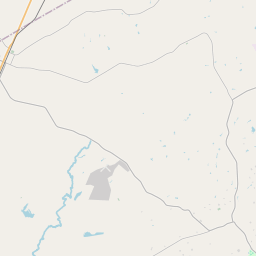Heards Prairie Cemetery







HEARDS PRAIRIE CEMETERY
AN 1841 INDIAN AMBUSH IN THIS VICINITY, WHICH CLAIMED THE LIFE OF MAJOR G. W. HEARD, GAVE HEARDS PRAIRIE ITS NAME. LATER SETTLERS, INCLUDING THE BATES, BRANTNER, GARNER, JONES, JENKINS, JOHNSON, MANOR, OLDHAM, STANFORD AND WARE FAMILIES, ESTABLISHED PETTEWAY, NAMED FOR MIKE PETTEWAY, WHO OPERATED A GENERAL STORE. BY 1900 THE COMMUNITY HAD THREE CHURCHES, TWO SCHOOLS, STORES, A COTTON GIN, A GRISTMILL AND A WOODMEN OF THE WORLD LODGE. A POST OFFICE OPERATED IN THE THRIVING SETTLEMENT FROM 1887 TO THE 1940s. AFTER WORLD WAR II, PRODUCTION OF COTTON AND OTHER CROPS DIMINISHED AND THE AREA TURNED TO RANCHING. LATER, MUCH OF THE SURROUNDING LAND WAS BOUGHT FOR COAL MINING. MOST OF THE HISTORIC RESOURCES OF PETTEWAY HAVE VANISHED.
ON OCT. 4, 1876, JOHN R. HENRY DONATED THREE ACRES OUT OF THE W. J. SMITH LEAGUE TO HEARDS PRAIRIE MISSIONARY BAPTIST CHURCH “FOR THE PURPOSE OF CREATING A HOUSE OF PUBLIC WORSHIP…ALSO FOR GRAVEYARD AND SCHOOL PURPOSES.” R. L. GUNTER AND WIFE DONATED ANOTHER TWO ACRES IN 1903; THE CEMETERY NOW OCCUPIES 3.5 ACRES, WHILE THE CHURCH AND A HISTORIC PAVILION ARE SITED ON 1.5 ACRES. THE SCHOOL NO LONGER EXISTS. HEARDS PRAIRIE CEMETERY HAS ALSO BEEN KNOWN AS HURD’S PRAIRIE, POST OAK AND PETTEWAY. THE OLDEST MARKED GRAVES ARE FOR MARY ISABELLA DIBBLE WARE (d. FEB. 1876), LEE M. GARNER (d. MAY 1876), HESTER OLDHAM (d. DEC. 1876) AND MARCELLUS SANDERS (d. MAY 1877). TOWN NAMESAKE MIKE PETTEWAY IS ALSO BURIED HERE, AS ARE DOZENS OF VETERANS DATING FROM THE CIVIL WAR. MARBLE, GRANITE, LIMESTONE, CONCRETE, CAST IRON AND FIELDSTONE GRAVE MARKERS IDENTIFY HUNDREDS OF MARKED GRAVES; THERE ARE ALSO UNMARKED BURIALS. THIS ACTIVE CEMETERY SERVES AS THE FINAL RESTING PLACE FOR GENERATIONS OF RESIDENTS AND AS A CHRONICLE OF THE PAST.
HISTORIC TEXAS CEMETERY – 2011
As one of the most visible programs of the Texas Historical Commission (THC), historical markers commemorate diverse topics in Texas history, including: the history and architecture of houses, commercial and public buildings, religious congregations, and military sites; events that changed the course of local and state history; and individuals who have made lasting contributions to the state, community organizations, and businesses.
The first oil well in the United States was drilled in Texas in 1859. The discovery of oil transformed the economy of the state and helped to make Texas one of the wealthiest states in the nation.
In the early 1870s, ranchers began to settle in what is now Roberts County. The region's vast grasslands provided ample grazing opportunities for cattle, attracting ranchers from across Texas. The county was officially established in 1876, named after John S. Roberts, a significant figure in the movement for Texas statehood.
Throughout the late 19th century, cattle ranching dominated the local economy, and the population grew steadily. In the 1880s, the establishment of railroads in the region further facilitated the increase in trade and transportation of cattle, allowing for better access to markets outside the county. This growth continued into the 20th century, with the development of better irrigation techniques and the expansion of farming activities.
However, like many rural areas, Roberts County faced challenges during the Great Depression. The Dust Bowl of the 1930s devastated agricultural practices in the region, causing massive crop failures and forcing many residents to abandon their farms. The federal government's New Deal programs aimed to provide relief and recovery for farmers in the area, leading to the implementation of soil conservation measures and the construction of dams and reservoirs.
Since then, Roberts County has experienced periods of economic growth and decline. Today, the county's economy is still primarily based on agriculture, with cattle ranching, farming, and wind energy production being major industries. The county's rich history and dynamic present make it an interesting and important part of Texas' heritage.
Roberts County Timeline
This timeline provides a condensed summary of the historical journey of Roberts County, Texas.
- 1876: Roberts County is officially established by the Texas legislature.
- Late 1870s: Buffalo hunters begin to populate the area.
- 1882: The first post office, "Roberts", is established.
- 1890: The county population is recorded at 565 residents.
- Early 1900s: Farmers and ranchers settle in the area, establishing the agricultural economy.
- 1933: The Dust Bowl hits Roberts County, causing severe soil erosion and economic hardships.
- 1950s: Oil and gas exploration begins, leading to increased economic activity in the county.
- 1980: The county reaches its peak population of around 1,400 residents.
- 1990s: Population decline begins as job opportunities decrease.
- Present: Roberts County continues to be a rural community with a focus on agriculture and energy industries.